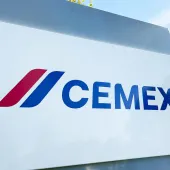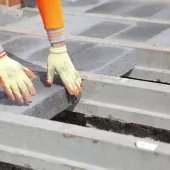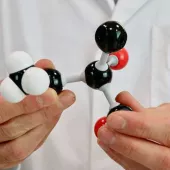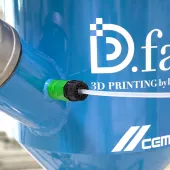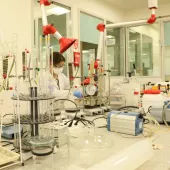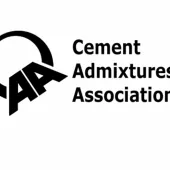The Kemco RC7
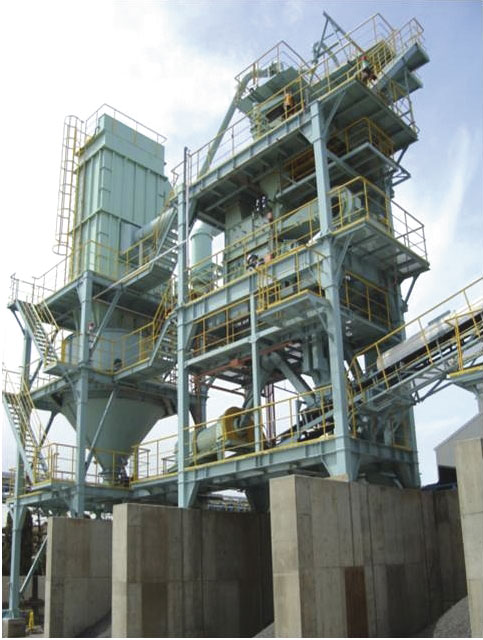
A dry process for quality recycled concrete aggregate
By Hugo Pettingell
The uses to which recycled concrete can be put are limited by the quality achievable using standard crushing and screening production methods. The inability to meet quality requirements means that much potentially valuable aggregate is relegated to low-value applications, such as general fill, sub-bases and capping material. In order for this material to be used in concrete production there are certain standards to be met.
In the UK, a formalized quality-control procedure1 for the production of aggregates from recovered inert waste has been produced by the MPA (Mineral Products Association), HA (Highways Agency) and WRAP (Waste and Resources Action Programme), and there are similar schemes in force elsewhere. These cover minimum requirements for characteristics such as particle density, resistance to fragmentation, bulk density, water absorption, magnesium sulphate, abrasion resistance, drying shrinkage, chemical and organic impurities, alkali-silica reaction etc.
In Japan, the wide imbalance between the supply of demolition concrete and suitable applications for this material, when conventionally crushed and screened, has led to the development of a highly effective process for enhancement.
Design brief
Aggregate equipment manufacturers Kotobuki Engineering & Manufacturing Co. Ltd (Kemco), of Hiroshima, who are already well known for their innovative dry sand manufacturing process, set themselves the target of recovering coarse and fine aggregate from recycled concrete, with quality as close as possible to the original constituents. Their approach was to analyse the difference between fresh aggregate and traditionally produced recycled aggregate, and then to set about improving it.
Comparing bulk density and water absorption of material in a wide range of samples gave the results shown below, which gives figures for coarse aggregate; fine aggregate displayed similar characteristics, but with different values – the bulk density of fine aggregate was much lower, and the range of water absorption between samples was more variable.
Clearly the difference lay in the presence of the adhering cement paste, amounting to between 25% and 54% of the mass of material, and a process was needed to strip it away, exposing the original surfaces.
Developing the process
Kemco have long experience with Barmac VSI production and application (at 32 years, they are the longest-standing licensees of the original technology), and have developed these machines in a number of job-specific ways. This led them to experiment with the preferential crushing ability of an autogenous VSI, to allow the softer, lighter cement layer to be peeled away from the original aggregate. They found that multiple passes through a specially-designed machine could easily remove the bulk of the cement paste, and research was carried out to find the optimum practical, and economically viable, processing needed for the product to be reused in concrete manufacture.
The target was the H grade of the Japanese Industrial Sand (JIS), which specifies 2.5g/cm3 density and less than 3% water absorption. Although it was entirely possible to improve upon this, the standard system provides for this level of quality by using three passes of the material through the crusher.
Five passes resulted in a return, in any practical sense, to the original properties of the constituent aggregates. However, it was found that little benefit accrued from the extra work done, since the density of the remaining cement paste increases as more is removed, and once reduced to less than 10%, its negative effect on the quality of the concrete is considered significant.
Testing in concrete mixes was carried out on many samples of processed and unprocessed recycled concrete, comparing them with fresh aggregates, with some quite impressive results2.
Plant design
Having clearly proven the benefits of removing cement paste from the crushed concrete, Kemco could now proceed with development of a suitable process incorporating features of their highly successful V7 dry sand-making system. A four-deck version of the air screen was incorporated to give a full range of product sizes while taking care of disposal of the unwanted cement in the form of microfines. The other features of the V7 that were equally desirable in this process can be summarized as follows:
- Low capital cost achieved by using a dry process.
- Lowest possible operating and maintenance costs through the use of autogenous VSI crushing technology.
- Small footprint, allowing the system to be sited in a limited space near the source of recyclable concrete material.
- Minimal noise level.
- Full dust encapsulation and elimination of emissions.
- Optional add-on process to pelletize microfine material for use in soil stabilization, etc.
The RC-7, as the unit is called, is available in three capacities, RC7-1 (35 tonnes/h), RC7-2 (55 tonnes/h), and RC7-3 (75 tonnes/h). Feed size is restricted to 40mm, and the recovery ratio will depend upon a number of factors, such as feed gradation, original cement content of the concrete etc. However, as a guide, around 45% is delivered as fine aggregate, 23% coarse aggregate, and 32% filler, which consists of 50% cement paste and 50% rock fines. The system can be supplied in modular form for easy erection, and to facilitate re-siting when necessary.
As with their V7 System, Kemco are able to accept bulk samples – generally three tonnes per test – of customers’ materials for process evaluation through a pilot-scale plant, and useful quantities of the resulting finished material can be returned for testing in concrete and for other uses.
Work is proceeding to establish means of utilizing the potential cementitious content of the filler, but even without doing so, Kemco appear to have produced a system capable of adding quality and value to a material which is likely to be produced in ever-increasing quantities from end-of-life demolitions, and which would otherwise have only limited potential for re-use.
For further information, visit: www.kemco.co.jp
References
- The quality protocol for the production of aggregates from inert waste – published by Waste and Resources Action Program (WRAP)
- Kemco product development research
- SAKURAI, K., CHIKAMATSU, R., KAYA, T., and A. ITAYA: ‘Quality of Concrete Using Recycled Aggregates Manufactured by Rotary Centrifugal Crusher and Applicability of Recycled Micro Fines to Admixtures’, Concrete Journal, Aug 2008, vol. 46, no. 8, pp. 11-17.


